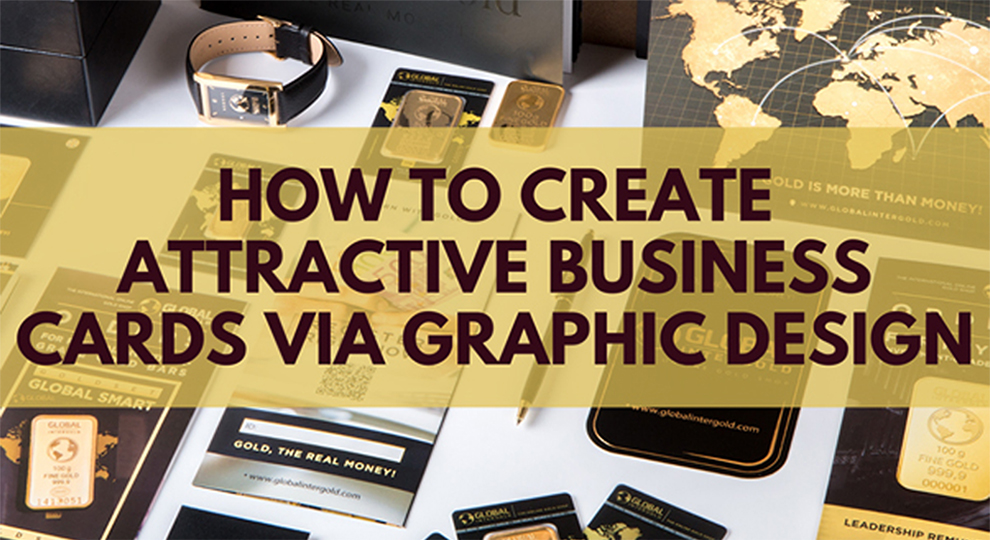Starting right from the shape of your card to the quality of paper used and the font you select, it tells a lot about your business standards. So, choose wisely!
Sometimes the most important things, like a business card seem entirely unnecessary to you.
The reasons for having business cards are many: you can use them for networking, sharing your company information, and even advertising your company. If people ask about your work, you can hand them your business card, or you can leave them in places where they’re likely to be useful.
Business cards are compact, easy to carry and contain all the information someone needs to contact you for more information or to schedule an appointment. Business cards are convenient this way.
If you’re looking for ways to create professional business cards that will help you stand out from the competition, then read on for some tips and advice on how to do so.
What Is a Business Card?
A business card is a piece of paper, usually, a small one, that gives one person’s contact information to another person. Business cards typically have space for recipients to include their contact information as well.
Business cards are usually exchanged at networking events or whenever two people meet for the first time.
Standard business cards don’t pique your customers’ interest or ensure they remember who you are. Business cards designed with the help of graphic design services can help you draw the attention of potential customers to your company.
7 Best Tips for Creating a Remarkable Business Card
When creating a business card, it’s common to think you need only to include your contact information. However, to set yourself apart and be taken seriously, you should do more than list your name and contact information.
Consider these tips for creating an attractive business card:
1. Choose The Card Shape
There are several different options, including square, rectangular, and circular. The most common shape is a rectangle because it can fit nicely into a wallet or purse.
Some other shapes, such as circular and oval, are more challenging to design because they are asymmetrical and need an obvious orientation.
Consider the thickness of your card stock. Most professional business cards use thick stock that feels rich and expensive. Thin card stock often feels flimsy or cheap to potential clients and makes you look amateurish.
Square cards are simple, classic, and professional. They work best for freelancers or small businesses that don’t have a lot of room on their cards for information. Use square cards to try new ideas and play with different fonts and designs.
Rectangular cards are more traditional and formal. They’re great for larger companies or organizations that want to give off a more professional vibe.
They’re also better for people who wish to include more information on their cards, like an image of themselves or a bio about what they do.
2. Choose Your Size
Different countries use different standard sizes for business cards. A typical business card is 55 mm by 85 mm, but you can find references to other dimensions online.
The following three things should always be kept in mind when designing a business card:
- The bleed area is the most exposed portion of a card and is most likely to be removed.
- For trimming cut cards, the target line serves as a guide.
- A safety line prevents anything outside from being accidentally cut. Make sure text and logos stay within this line.
3. Add the Necessary Text
Keep an eye out for standards about the content that you’ll want to include. Business cards typically include the owner’s name, title, and contact information (phone and email). In addition, include your website, physical address, and social media links if your company has one.
Consider putting each phone number and email address on its own line on the card, so they don’t get buried under the mountain of information already on the card.
4. Choose Your Typography
The art of arranging type in a way that makes it easy to read is called typography. Choosing a font alone isn’t enough; you must consider how your type interacts with one another, how it appears when placed next to each other, and how it looks to the reader.
Legibility and aesthetics should be considered when selecting typography for business cards.
Legibility refers to how easy it is to read your card. Legibility is maximized by using a font that can be read in a constrained space and with a small amount of text.
When selecting a typeface, consider whether it is easy to read from left to right. Business cards usually use sans-serif fonts, but certain serif fonts can also look professional.
Aesthetics refers to how appealing your card is to the eye (and how legible it is). Print samples of each font on varying paper thicknesses to determine which looks better when scaled.
5. Choose the Right Color
Making a memorable business card starts with choosing the right color. Consider how the color of your business card impacts how it appears on a desk, how potential customers perceive it, and how it also fits into a lineup with other cards. The color of the card affects all of these things.
Choosing a color for your business card should convey professionalism and prevent it from standing out too much from the other cards. Match your color scheme with your creative logo design and other design elements.
Your card should have a color background that makes your image visible. Your brand and personality should also be reflected in the color you choose.
6. Add a Logo and Other Graphics
A business card should be visually appealing, complete with a logo and other graphics representative of your brand.
The logo should be one of your top priorities when designing your business card. Keep the logo simple, unmistakable, and uncomplicated. The use of the logo will not be beneficial if it causes people to get confused about its meaning.
Include a creative graphic design element so your card stands out from others in someone’s wallet or pocketbooks, such as a production illustration or an edge border.
7. Leave Some White Space
White space is an important consideration when designing business cards. Using white space on a business card can enhance its aesthetic pleasing, readability, and ease of use.
Having white space on your business card gives the text and graphics on the card more breathing room. It will be easier for your audience to focus on what is significant and avoid getting sidetracked by other elements.
Using white space on your business card will also make it appear less cluttered, which will make it appear more professional.
Conclusion
Business cards are usually the first impression clients, and customers have of a company. One can use them as a marketing tool to get their name out there. Make a great first impression with a memorable and visually appealing business card design.
The design of your company’s business cards should reflect its values and attract customers. If your business card is of high quality, the people who receive it will form a favorable opinion of your company and the products or services it offers.
Make it a point to invest in the best graphic design services to create your ideal business card.
FAQs
Why do businesses need business cards?
Distributing business cards is a common marketing strategy companies use to gain new customers. Businesses also use them for advertising purposes. Many companies and organizations use them to spread the word about their goods and services and for advertising purposes.
Should business cards be printed on high-quality paper?
Yes, since people will assume that your work will match your business card’s quality. This is true even if you’ve already built a solid reputation. Ensure that every aspect of the card, from the paper stock to the ink color, is polished and professional.
How many business cards should I have?
Generally, people begin with 250 or 500 cards, but you can have batches of 100 up to 5,000. Depending on your industry and the nature of your work, you may wish to create more cards.





